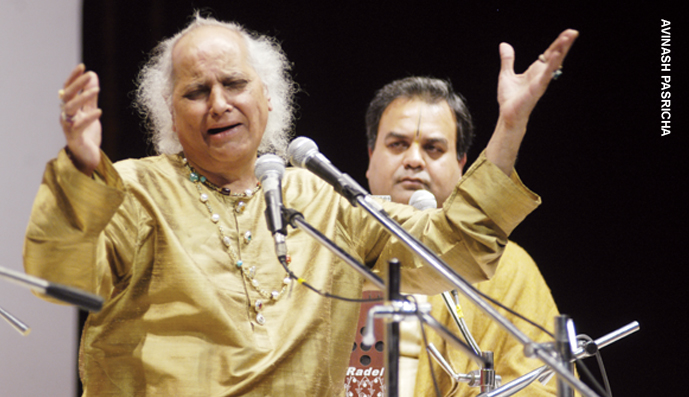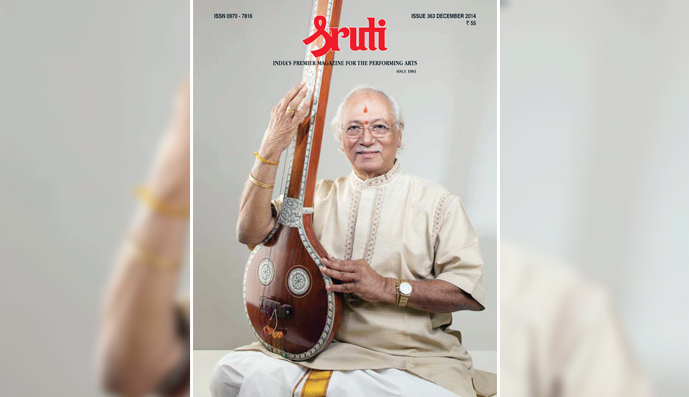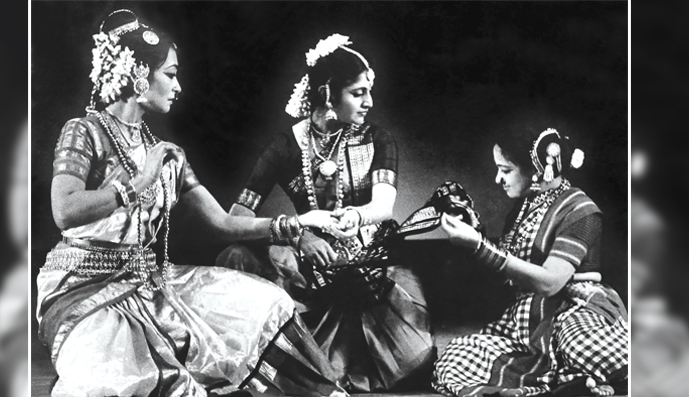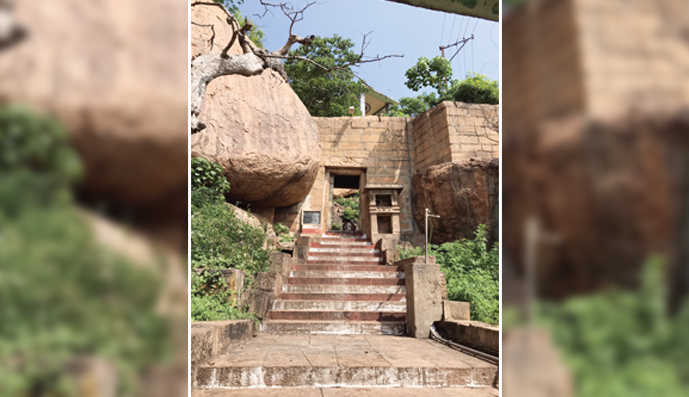The passing away of ‘Sangeet Martand’ Pandit Jasraj (as he was known) on 17 August 2020, marked the end of an era as there is now no one left of his stature and popularity, in the world of north Indian classical vocal music. He was not just an extremely fine singer who was able to hold his audience’s attention with his voice, but was also a trained tabla player and highly accomplished layakar. He was also undoubtedly the most prolific teacher of his generation with more than 20 concert-giving accomplished disciples, including instrumentalists. Well-known vocalists Madhup Mudgal, Sanjeev Abhyankar, Tripti Mukherjee, Ratan Mohan Sharma, Ankita Joshi, Pritam Bhattacharya, and instrumentalists Kala Ramnath (violin), Shashank Subramanyam (flute), to name a few, are his disciples. He established several successful teaching schools, especially in the U.S.A., where his legacy is a living tangible thing. Another significant aspect of his enormous musical legacy is his incorporation and popularisation of the bhakti-Pushtimarg dhrupad compositions clubbed as ‘haveli sangeet’ into the mainstream classical repertoire. Haveli sangeet referred to the sangeet practised in the havelis or temples inside homes—built to avoid reprisal by the Muslim rulers around 400-500 years ago; the tradition was started by the Telugu brahmin saint Vallabhacharya. The areas impacted include Vrindavan, Udaipur, Baroda, and even Amritsar. Jasraj dug out old dhrupad compositions and sang them at the end of every concert in the last 20-25 years of his life, in the khayal-gayaki style in which he had trained. These pieces were eagerly awaited, more than even his regular classical repertoire.
It is a special feeling to know that the famed Sruti magazine has completed over three decades of classic, critically creative, and ultimately contributory existence in the Mecca of Indian classical arts—Chennai! Sruti has completed 37 years and is marching forward fearlessly! I have known its founder, Pattabhi Raman, a cultural fanatic and die hard purist from the time when he came to my house with Ustad Hafiz Ahmed Khan—an eminent Hindustani vocalist, who spent a lot of time seriously learning Carnatic vocal and even performed a few kritis with great success. It was the pre-Sruti days. Later, Pattabhi Raman conceived the Sruti idea. With its success after the hard work done by him and his loyal team, he was known only as Sruti Pattabhi Raman! I am proud to say that this magazine is the most authentic literary, and has helped in the rise of the south Indian classical arts into the top rung at the global level. I fondly remember the times Sruti did an exhaustive feature on my guru Chembai Vaidyanatha Bhagavatar—and later one on me as well.
Here is a peep into the recent past. It was a memorable Pongal day in 1986 when three Bharatanatyam divas created history by performing together for the very first time ever, weaving unforgettable magic on the television screen. They were none other than Padma Subrahmanyam, Sudharani Raghupathy and Chitra Visweswaran, who created a timeless classic, Viralimalai Kuravanji. Thirty-four-years after it was premiered on Chennai Doordarshan, excerpts from it were shown at Sri Krishna Gana Sabha’s Natya Kala Conference in 2019, when the convener, Rama Vaidyanathan, organised a nostalgic journey down memory lane by these “dance buddies” as she described them. Even though the recording was salvaged from an old VHS copy, the audience was enthralled with the scintillating performance by these distinguished artists. They were spellbound by the synergy on the screen and responded with spontaneous applause. It was one of the proudest moments of my life as I had the privilege of directing this dance-drama for Doordarshan and it was a special feeling to enjoy the overwhelming response from rasikas.
In the September issue of Sruti we journeyed to Kadambar Koil—the first in the triad of Siva temples along the Akhanda Cauvery near Tiruchi. The second of these is Iyermalai or Ratnagiri, which like Kadambar Koil, is on the south bank of the river, and just ten minutes away from it. In the first shrine, the Lord faces north, here He faces west. The temple is somewhat of a rarity among Siva shrines, for it is on a hill, and a fairly steep one at that. You have to climb 1,017 steps to reach the temple; the summit is 1,178 feet from ground level. The Lord here is known as Tiruvatpokkiyar—He who rids us of fatigue. It is rather an ironic name, for climbing to the temple is an arduous trek. The authorities have done what they can by providing well-cut steps and the pathway has pavilions at frequent intervals which not only provide shade to the pilgrims but also prevent the granite steps from becoming baking hot. Those who cannot climb can avail of the dholi service—four young men place you in a cane chair that is rather insecurely perched on bamboo poles and carry you up. While this is quite fast, I am told by those who used this mode that it is a rather hair-raising experience. For one, you are on a shaky seat and secondly, you are invariably at a sharp angle right through as the men race upwards. It is like being in an aircraft that is forever in takeoff mode!
CONTENTS
6 News & notes
12 Birthday calendar
14 Pandit Jasraj
25 Spotlight v Sruti nostalgia
30 A peep into the past v Viralimalai Kuravanji
34 Heritage sthalams v Iyermalai
- Ratnagiri
38 Analysis v Rasa in ancient texts
41 Class act v J.S. Prabhu
44 S. Rajam’s paintings v Saptaswara devata: Ga
46 From the Editor
Front
Cover: Pandit Jasraj (Photo
by Avinash Pasricha)
No.
433






